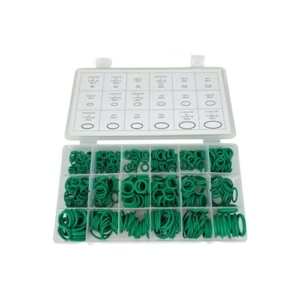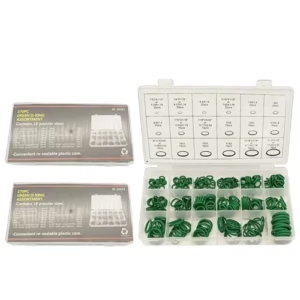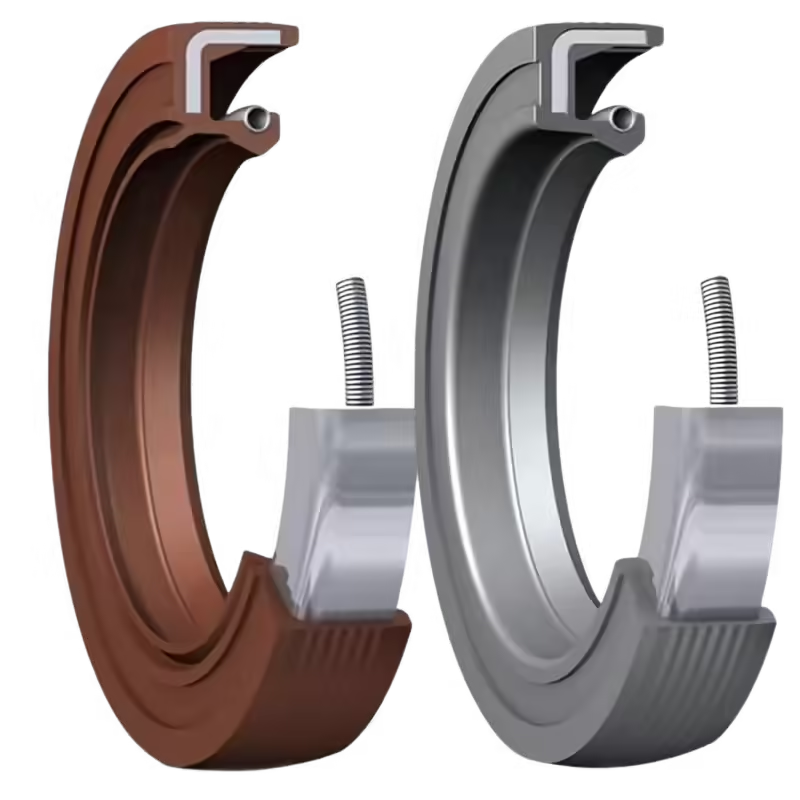What Materials Are Used for Seals in Automotive Air Conditioning Systems?
Introduction
In modern automotive air conditioning (A/C) systems, seals play a crucial role. They ensure the effective circulation of refrigerants within the system, prevent leaks, and maintain the system’s pressure and balance. Selecting the appropriate materials for these seals is essential for their durability, performance, and reliability, especially under extreme temperature and pressure conditions.
1. Commonly Used Materials for Automotive A/C Seals
1.1. Rubber (Elastomeric Materials)
Rubber materials are widely used in automotive A/C systems due to their high elasticity and excellent sealing capabilities. Common types of rubber include:
- Nitrile Rubber (NBR): Resistant to refrigerants, oils, and heat, NBR is commonly used for O-rings and gaskets.
- Fluoroelastomers (FKM): Offering excellent resistance to high temperatures and aggressive refrigerants (such as R-134a and R-1234yf), FKM is suitable for high-demand sealing applications.
- Ethylene Propylene Diene Monomer (EPDM): EPDM provides superior resistance to ozone, weathering, and aging, making it ideal for hose seals and gaskets.
- Chloroprene Rubber (CR): Balancing oil and ozone resistance, CR is widely used in various A/C components.
Key properties of these rubber materials include high flexibility, exceptional sealing capabilities, and good thermal stability, making them highly effective in automotive A/C systems.
1.2. Thermoplastic Elastomers (TPE)
Thermoplastic elastomers offer advantages such as recyclability, ease of molding, and excellent sealing performance. TPE is typically used for O-rings and gaskets in less demanding environments, making it suitable for cost-sensitive applications with moderate performance requirements.
2. DRO’s Approach to Material Selection and Production
2.1. NBR for Developing Markets
In regions with limited procurement capabilities and budget constraints, Nitrile Rubber (NBR) is the primary material used for producing A/C seals and repair kits. While NBR is cost-effective, its performance at low temperatures is average, making it less ideal for more extreme conditions. Therefore, selecting NBR involves balancing economic considerations with performance needs.
2.2. HNBR for Developed Markets
In developed countries, Hydrogenated Nitrile Butadiene Rubber (HNBR) is the preferred material for automotive A/C seals due to its exceptional resistance to fluorocarbon refrigerants and superior low-temperature performance. HNBR has long been a reliable material in the automotive A/C sector, particularly valued for its durability and ability to withstand extreme temperatures.


3. Specialty Materials for High-Performance Applications
3.1. Silicone Rubber
Silicone Rubber is renowned for its exceptional temperature resistance, stability, and chemical resistance. It is often used in critical high-temperature areas or environments with high chemical exposure, ensuring that seals remain reliable even under extreme conditions.
3.2. Polyurethane (PU)
Polyurethane offers outstanding wear resistance and durability in high-pressure and high-stress environments. It is used for seals in compressors, expansion valves, and other high-load A/C system components, ensuring the efficient operation of the system.
4. Metal-Based Seals
4.1. Copper and Aluminum Seals
Copper and aluminum seals are used in areas requiring metal-to-metal sealing, such as compressor ports or connectors. These metal materials offer corrosion resistance, high thermal conductivity, and strength, ensuring reliability under high temperature and pressure conditions.
4.2. Composite Seals
Composite seals combine the strengths of metal and rubber materials, enhancing both the strength and elasticity of the seal. They are often used in high-performance or specialized sealing tasks within A/C systems, meeting the demands of complex automotive systems.
5. Considerations in Material Selection
5.1. Temperature Resistance
Understanding the operating temperature range of A/C systems is crucial. The chosen material must withstand both low and high temperatures to ensure the seal’s stability and reliability in various environments.
5.2. Chemical Compatibility
Materials must be compatible with refrigerants (such as R-134a and R-1234yf) and lubricants to prevent degradation or leakage, ensuring the long-term stable operation of the system.
5.3. Durability and Longevity
Evaluating the material’s lifespan under repeated thermal cycles, vibration, and exposure to air and moisture is essential. This ensures that seals remain durable and reliable over extended periods of use.
5.4. Environmental Considerations
Choosing eco-friendly materials can reduce environmental impact. For example, recyclable thermoplastics align with sustainable development trends and regulatory requirements, promoting environmental responsibility.
6. The Future of Automotive A/C Seals
6.1. Advanced Materials
The future of automotive A/C seals includes the exploration of new materials such as bio-based polymers, smart seals, and self-healing materials. These advanced materials promise higher performance and longer lifespans, driving innovation in seal technology to meet the evolving demands of the automotive industry.
6.2. Industry Trends
There is a growing trend towards more energy-efficient and environmentally friendly A/C systems. This drives innovation in seal material development, focusing on creating materials that not only enhance system performance but also reduce environmental impact. The adoption of innovative materials supports the automotive industry’s shift towards sustainability and higher efficiency.
Conclusion
This article reviewed the primary materials used for automotive A/C seals, highlighting the importance of proper material selection for optimal system performance. As technology advances and environmental awareness increases, the sustainability and innovation of sealing materials are becoming increasingly significant in the automotive industry. Selecting the right materials not only enhances the efficiency and reliability of A/C systems but also promotes the industry’s move towards more environmentally friendly and efficient solutions.
For more information, visit drorubber.com.
Contact Information:
- WhatsApp: +0086 15815831911
- WeChat: +0086 13784044874





